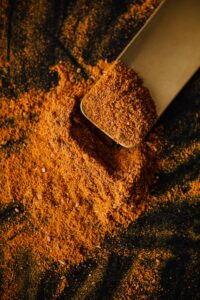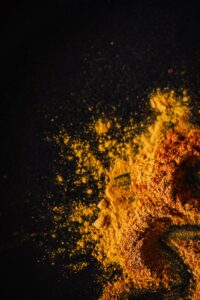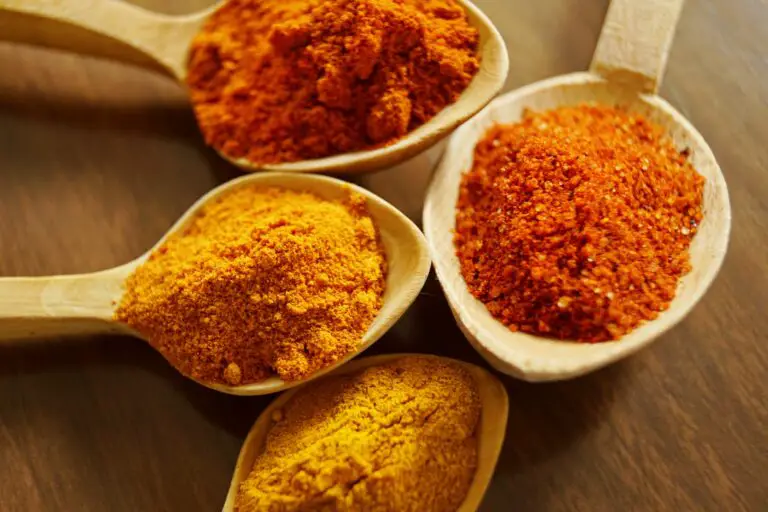Turmeric, a spice known for its bright yellow colour and distinct flavor, has long been a staple in kitchens around the world. Beyond its culinary uses, the chemistry of turmeric holds a wealth of potential in various fields, from food science to medicinal chemistry. In this exploration, we delve into the intricate chemical makeup of turmeric and uncover why it serves as a remarkable natural food coloring agent.
The Chemistry of Turmeric: Why It’s a Natural Food Coloring Agent
Curcuma Longa: The Source of Turmeric’s Brilliance
At the heart of turmeric’s vivid color lies its primary bioactive compound, curcumin. This polyphenol is derived from the underground stems (rhizomes) of the Curcuma longa plant. The chemical structure of curcumin is characterized by a series of aromatic ring systems connected by a seven-carbon linker, creating a structure that exhibits remarkable colorant properties.

The Role of Curcumin: From Spice to Colorant
Curcumin, along with related compounds like ar-turmerone, are responsible for the bright yellow coloration of turmeric. It owes this property to a phenomenon called keto-enol tautomerism, wherein the molecule can exist in two forms, each exhibiting a different color under visible light.
Overcoming Solubility Challenges: From Ground State to Bioavailability
While turmeric powder is an excellent spice, its active compounds, including curcumin, are poorly absorbed by the body. This water-insolubility has been a significant hurdle in harnessing its full potential for health benefits. Various approaches, including the use of organic solvents and liposomal formulations, have been explored to enhance the bioavailability of curcumin.
Turmeric’s Health Benefits: Unraveling its Medicinal Chemistry
The Anti-Inflammatory Powerhouse
One of the most well-studied aspects of the chemistry of turmeric is its potent anti-inflammatory effects. Preclinical and clinical studies have demonstrated curcumin’s ability to modulate inflammatory pathways, offering promise for conditions ranging from arthritis to gastrointestinal disorders.
Beyond Inflammation: Turmeric in Cancer Treatment
The anti-cancer effects of curcumin have garnered significant attention. Studies have shown that this compound, in both pure and crude forms, exhibits potential in inhibiting the growth of cancer cells. Ongoing clinical trials continue to explore its role as an adjunctive treatment in various forms of cancer.

Turmeric in Alzheimer’s Disease Research
Turmeric’s potential in Alzheimer’s disease has also been a subject of intense investigation. While curcumin is considered a non-bioavailable compound due to its poor absorption, research suggests that it may still exert positive effects in the brain, potentially influencing the progression of this devastating neurodegenerative disease.
Turmeric in Food Science: From Flavoring to Colorant
Turmeric Oleoresin: A Versatile Extract
In food science, turmeric oleoresin, derived through methods like supercritical carbon dioxide extraction, plays a crucial role. It contains a concentrated blend of curcuminoids and essential oils, providing both color and flavor to a wide array of food products.
Turmeric Stains: A Culinary Challenge
While turmeric’s staining power is a testament to its vivid color, it can be a nuisance when it comes to clothing and kitchen surfaces. Understanding the chemical examination of turmeric stains is essential for devising effective methods to remove them.
Future Directions: Ongoing Research and Potential Applications
The Quest for Enhanced Bioavailability
Efforts in medicinal chemistry continue to focus on synthesizing curcumin analogs with improved solubility and absorption properties. These endeavors aim to unlock the full potential of turmeric in therapeutic applications.
Exploring Novel Formulations
Recent studies have explored innovative approaches, including microwave-assisted extraction and preparative separation techniques, to optimize the extraction of curcuminoids from turmeric. These advances hold promise for producing high-quality extracts for various applications.
Turmeric and Beyond: The Broader Implications
Beyond its applications in food and medicine, the chemistry of turmeric oil underscores the broader potential of natural compounds in various fields. Its vibrant color, combined with its biological activities, exemplifies the intricate interplay between organic chemistry and biological chemistry.
The chemistry of turmeric is a testament to the multifaceted potential of natural compounds. From its role as a natural food coloring agent to its diverse health benefits, turmeric continues to be a subject of extensive research and exploration. As ongoing clinical trials and innovative approaches further unravel its secrets, turmeric’s significance in both science and everyday life is bound to grow.

